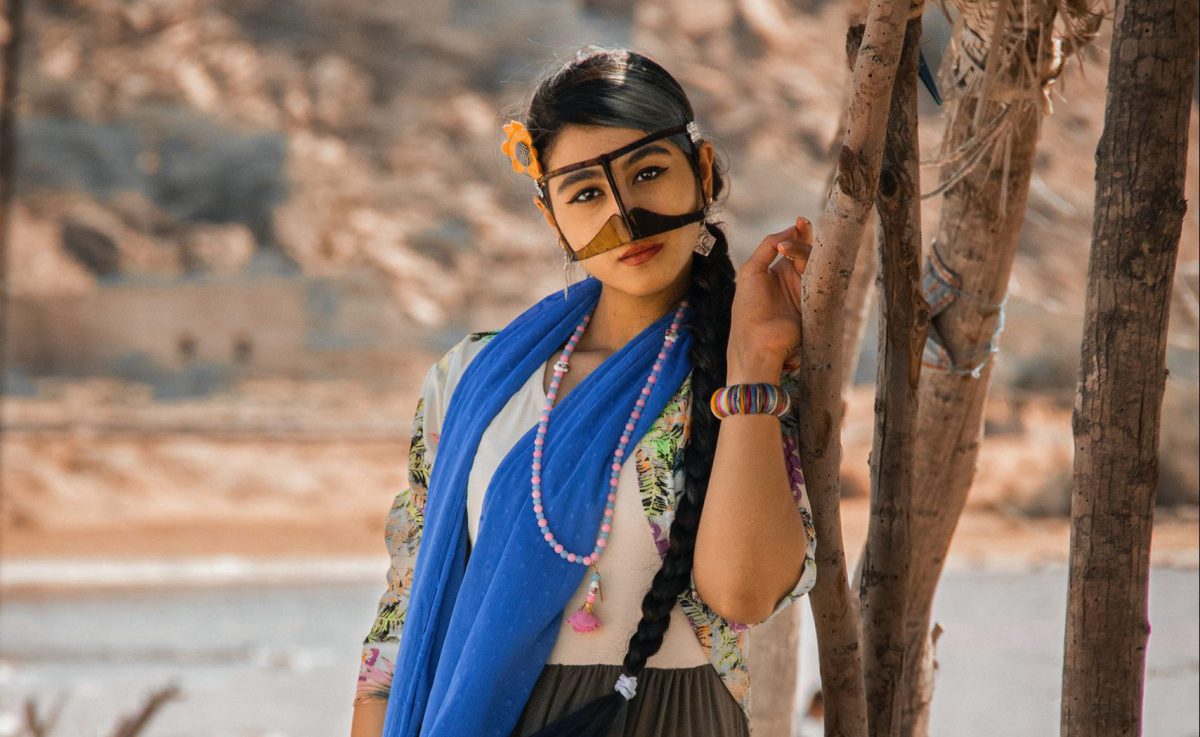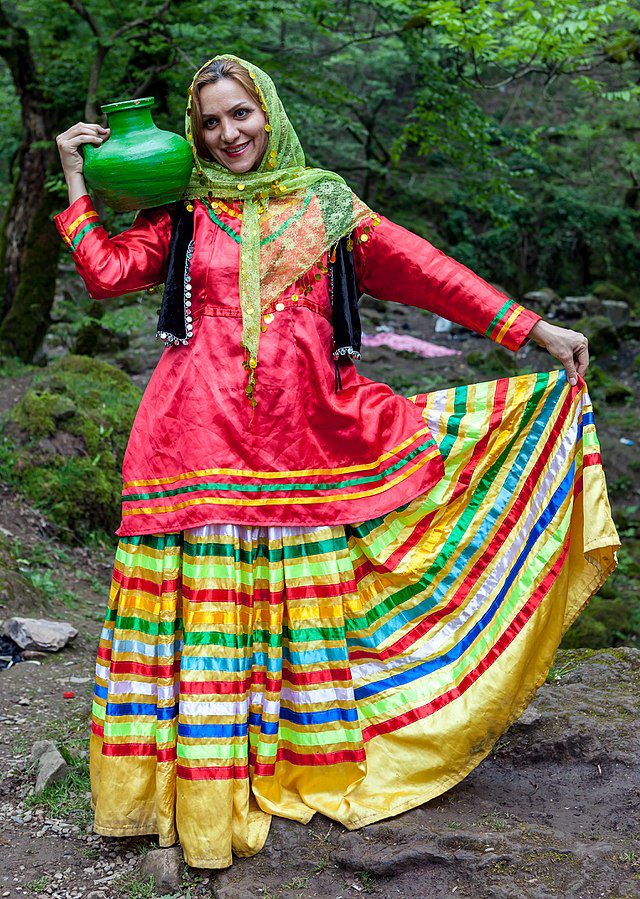Table of Contents
Iran, being a diverse country with a variety of ethnic groups, offers a rich heritage of traditional clothing. From the embroidered designs to the colorful patterns, Iranian clothing has always been a symbol of cultural identity and pride. Traveling to Iran can give you a glimpse of the wide range of traditional Iranian clothing belonging to different cities and cultures, which reflects the glorious Persian heritage that penetrates your soul.
From the ancient era until now, clothing has been a vital issue in the Iranian lifestyle, and it has been influenced by religious beliefs, especially in villages. Iran traditional dress is still worn among different ethnic groups, showcasing the history and costume that is unique to each region. Despite the strict Iran dress code enforced after the revolution, a variety of clothes are still seen, especially in villages. Moreover, a significant number of Iranian women in big cities like Tehran are eager to follow fashion and wear sophisticated and fabulous clothes. They dream of being seen as beautiful and charming, fulfilling their desires.
Iranian clothing is a reflection of the diversity and multi-ethnicity of its society. It is not only a representation of the cultural heritage but also a manifestation of the artistic talents of Iranian artisans. Traditional Persian clothing for men and women differs in design and color, and they are adorned with intricate embroidery, beading, and sequins, all meticulously crafted by skilled craftsmen. The beauty of traditional Iranian dress is truly captivating and it attracts tourists from all around the world.
Here is the list of traditional Iranian clothing that we are going to explore:
Kurdish Clothing: Colorful and Vibrant
Kurdistan, the western province of Iran, has its own unique style of clothing that is characterized by its colorful and vibrant designs. The traditional Kurdish dress consists of a long gown or dress adorned with colorful patterns, over which a vest or jacket is worn, paired with colorful pants and belts or embroidered shoes with stones or beads. It is a true feast for the eyes to see the vivid colors of Kurdish clothing.
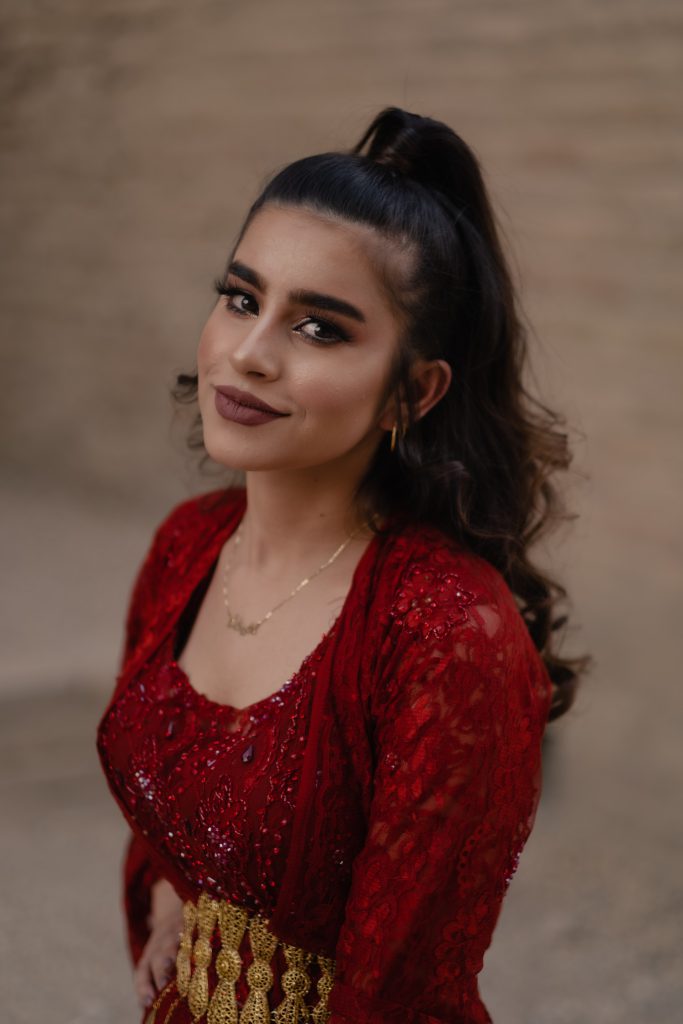
In addition to their colorful clothing, Kurdish women are also fond of jewelry and accessories, regardless of age. Wearing expensive jewelry has been a part of the old culture of dowry in Iran, and it is still popular among Iranian people. It presents the glory and pride of an older woman, given to her by her husband’s family as a large dowry.
Although older women in Kurdish tribes tend to prefer dark clothes, younger women are often seen wearing bright-colored traditional gowns and dresses. The vibrant colors of their clothing reflect the joyful and lively nature of the Kurdish people, and it is a testament to their cultural identity.
In conclusion, Kurdish clothing is an essential part of the cultural heritage of Iran that showcases the diversity and unique features of each region. The colorful and vibrant dress of Kurdish people is a true representation of their joyful and lively nature, and it adds to the beauty of Iranian traditional clothing.
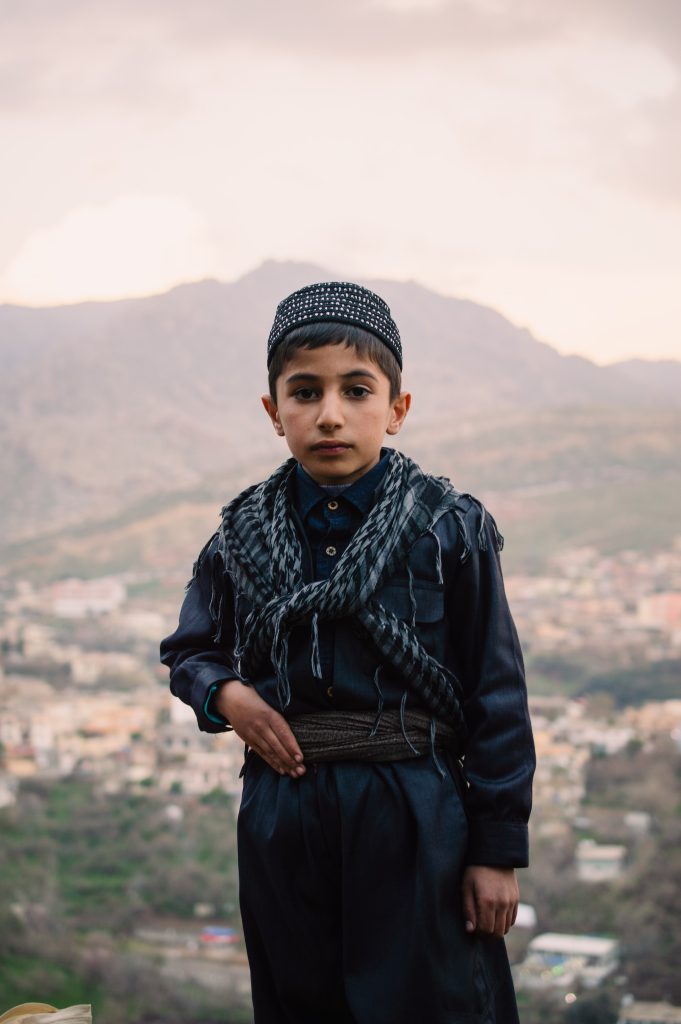
The Charm of Northern Iranian Clothing
The north of Iran is known for its breathtaking scenery, with picturesque landscapes that are beautiful to behold in every season. In the spring, the air is filled with the scent of blossoming flowers, and the gentle breeze of the Caspian Sea offers a refreshing break from the bustling city. During autumn, the colorful trees create a stunningly beautiful sight that is unforgettable.
In this region, men and women spend their busy days working in paddy fields, dressed in traditional clothing that is well-suited for their jobs. Gilan, in particular, is known as the green province of the north, and the women here prefer not to wear black clothing as they want to fully embrace the beauty of the natural scenery.
Even during funerals, women in the north of Iran prefer to wear ragged traditional clothes instead of black, to express their sadness in a unique way.
The traditional clothing of Gilaki women consists of a range of garments, such as Chadorkamar, Shaliteh, skirts, trousers, coats, robes (Kutah-Tuman), scarves, Lachak, and short skins (Gerd-e Tuman). Lachak, a type of headdress that resembles a hat, is a common accessory worn by older women.
In summary, the northern part offers not only natural beauty but also a unique and charming traditional Iranian clothing style that is a testament to the cultural diversity of Iran. The clothing worn by Gilaki women is not only functional but also beautiful, with various accessories that add to the overall charm of the outfit.
Persian Gulf Unique Clothing Style
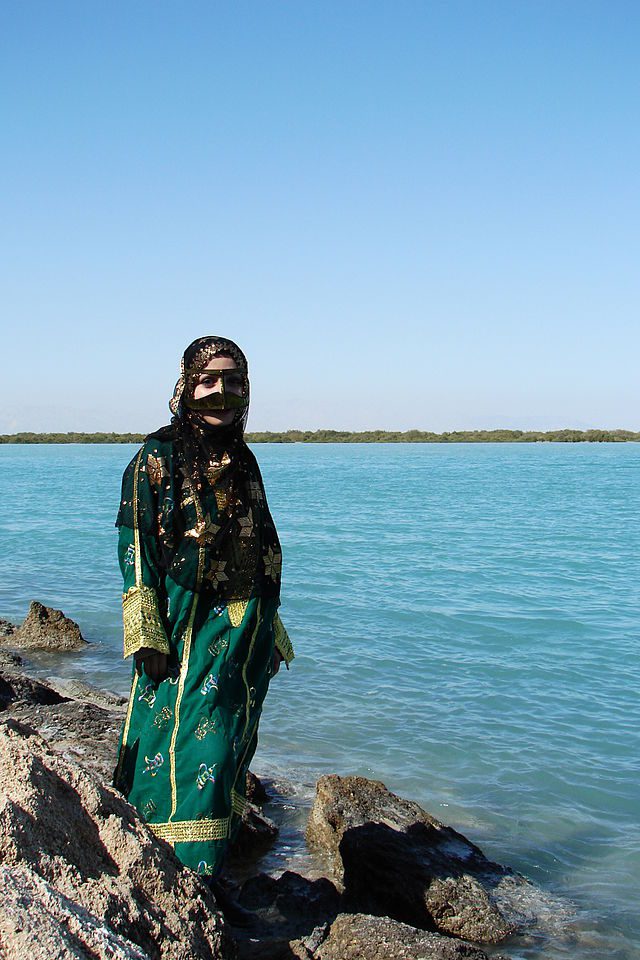
The southern provinces of Iran, Khuzestan, Hormozgan, and Bushehr, have a distinct Iranian clothing style, reflecting the unique culture of the region. Women in this area wear long dresses, head coverings, trousers, and shoes. The head covering, made of thin silk, is commonly black and fastened with a metal pin at the top. Interestingly, some women in the south cover their faces, in contrast to women in the north of Iran. Another notable feature of women’s clothing in the South is the use of henna, a traditional practice of coloring the hands, which is also common in Arab culture.
Men in this region wear a small white or colored cap and wrap a 2-meter-long cloth around their body. Older men tend to wear white while younger men wear colorful ones. Shoes are also an important part of men’s attire in the south of Iran, with a variety of options such as Harza, Malaki, and Jufi being commonly worn. With its distinct clothing style, the southern region of Iran showcases the diverse range of traditional Persian clothing styles present throughout the country, reflecting the rich culture and history of Iran. Read this article if you want to know about the current situation of Iran:
Bakhtiari, Colorful and Practical Clothing
The Bakhtiari nomadic tribe’s clothing is not only practical but also colorful and stylish. This ancient Iranian tribe, which has a history dating back several millennia, has developed traditional Persian clothing to cope with the harsh and varying climates encountered during their migrations. The men wear tunics and wide trousers that are fastened at the ankle, as well as wool skullcaps, while the women wear bright, layered skirts and matching vests.
The Bakhtiari women’s long headscarves are particularly noteworthy, as they are adorned with hand-stitched designs or ornaments that make them unique. This tribe’s clothing is an embodiment of the ingenuity, practicality, and aesthetics that are characteristic of Iranian traditional dress. Moreover, Bakhtiari’s clothing style is a reflection of their way of life, reflecting their independence, strength, and resilience in adapting to the changing environment.
The Vibrant Clothing Style of Baluch People
The Baluch people have a unique and vibrant Iran traditional clothing style that is influenced by their geographical location and cultural heritage. The traditional Baluchi dress for women consists of colorful embroidered knee-length dresses and wide-legged trousers paired with gold accessories such as bracelets, necklaces, and brooches. To complete the look, a second, longer shawl is worn over their head and shoulders, adding an extra layer of elegance to their attire.
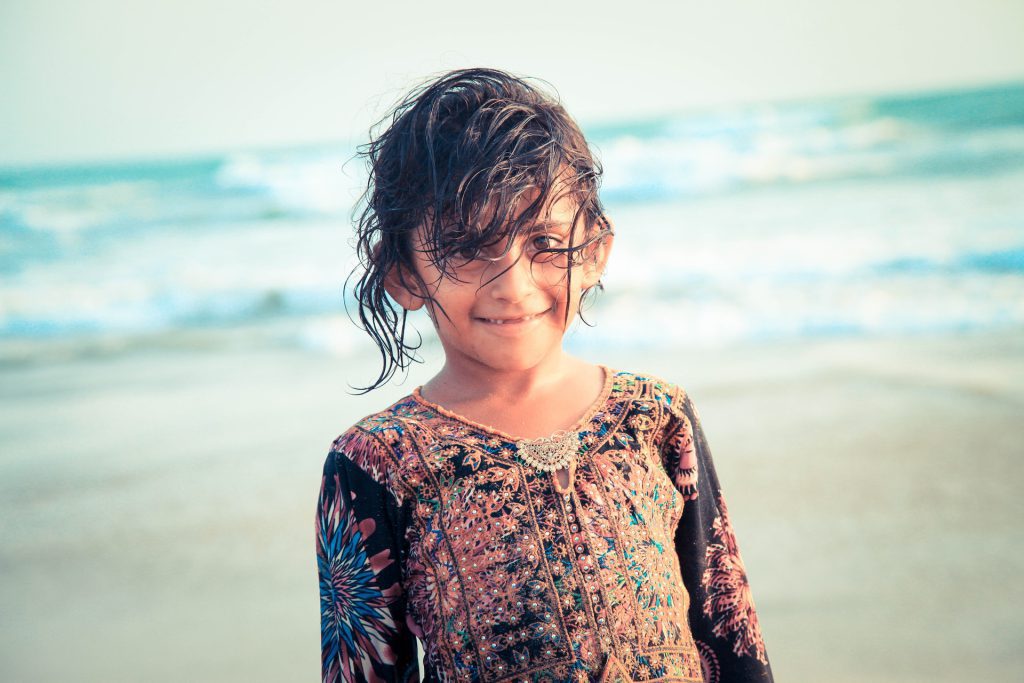
Men’s traditional Baluchi dress comprises long pants, loose-fitting shirts, and a turban, all of which provide practicality and comfort in the hot and dry climate of southeastern Iran. The Baluch people’s clothing style reflects their cultural identity and their connection with their neighboring countries of Pakistan and Afghanistan. By embracing their unique clothing style, the Baluch people showcase their heritage and pay tribute to their ancestors.
The Unique Traditional Dress of Turkmen People
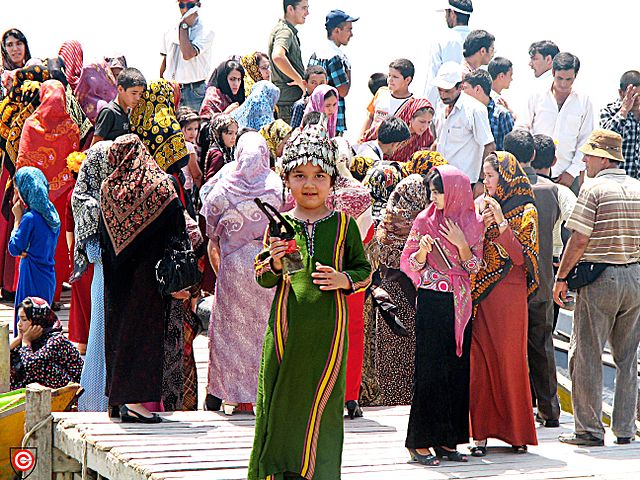
The Turkmen people, with their roots as a nomadic tribe living on the northern border of Iran with Turkmenistan, have a unique Iran traditional dress that reflects their way of life. While many have settled into permanent homes and tents, some still continue the nomadic tradition. The dominant colors in Turkmen traditional dress are earthy tones, and both men and women wear long dresses with open robes. Women often conceal part of their face with a cloth hanging just below the nose, while men wear wool hats to protect against the cold weather.
Their clothing is not only functional but also decorated with intricate patterns and designs that reflect their cultural heritage. The unique patterns are usually woven into the fabric of their dresses and robes using vibrant colors that catch the eye. It’s fascinating to see how their traditional dress, though influenced by the harsh climate of the region, has evolved to reflect their cultural identity, and how they have managed to preserve their traditions even in the face of modernization.
FAQs about Traditional Iranian Clothing
Q1: What is traditional Iranian clothing called?
A1: In the past, men wore a clothing combo called Shalvar and Jameh, usually with a broad belt named Kamarband, which inspired the English word “cummerbund.” Men also wore head coverings called Sarband. Both men and women wore long robes and loincloths.
Q2: What is a Persian female dress called?
A2: In the past, many rural Iranian women wore a light-colored or printed chador with a headscarf (rousari), a blouse (pirahan), and a long skirt (daaman). Some also wore a blouse and skirt or dress over pants (shalvar). These traditional styles are still worn by many older women in rural areas of Iran.
Q3: What is a Jameh clothing?
A3: The traditional outfit for Mazani men is called Jomeh or Jameh. The materials used for it vary depending on the season. They wear a dark blue or black Pashmbal that reaches their ankles and is closed with a strip. During winter, they add a black vest with a V-neck over the Jameh. Shepherds in Mazandaran wear a dress called Shola and Boshloq.
Q4: What are Persian robes called?
A4: A kandys, also known as candys, kantuš, or Median robe, is a specific type of Persian coat that is three-quarter-length. The word “kandys” possibly comes from the Ancient Greek term “κάνδυς,” which likely originated from the Old Persian word *kandu, meaning “mantle” or “cover.”
Q5: What did ancient Iranians wear?
A5: Traditional Persian clothing included tunics, trousers, shawls, coats, and closed robes. Robes were made of rectangular-cut fabric and could be draped and tied in different ways based on the style or the wearer’s status. Women sometimes wore trousers, which was quite typical. However, wearing veils was not very common during that period.
Q6: What do Muslims wear in Iran?
A6: In Islamic areas, there are rules about how people should dress and behave. In public, women need to wear a headscarf, pants or a long skirt, and a long top or coat that covers their thighs or knees. Men should wear long pants and long-sleeve shirts.
Q7: Why do Iranian women have to wear hijabs?
A7: For devout Muslim women, wearing a headscarf signifies their religious devotion and modesty in the presence of men who are not part of their family. In Iran, the hijab, including the black chador worn by some, has also held political significance for a long time.
Q8: How do you address a Persian woman?
A8: In addressing men, the title “agha” (sir) can be used before or after the first name. When referring to someone’s last name, the term “agha-yeh” is placed before the surname. For women, the title “khanoom” (madam) is used.
Last Words: Experience the Charm of Traditional Iranian Clothing with Customised Tours
Traditional Iranian clothing is diverse and proud, reflecting different cultures and regions. Despite rules, people in villages still wear traditional clothes. In cities like Tehran, women like to wear fashionable clothes and look beautiful. Iranian attire is unique, with beautiful designs and embroidery, attracting tourists from all over the world.
Embarking on a trip to Iran for the sole purpose of exploring its diverse and captivating clothing heritage requires a meticulous approach. This is why opting for a customized and tailored tour is the key to unlocking the door to Iran’s rich textile traditions. To Iran Tour, a leading name in the realm of travel specializes in crafting personalized journeys that are as unique as the intricate patterns woven into Iranian fabrics.
Let our Customised Tours be your gateway to unraveling the charm of traditional Iranian clothing, making your trip an unforgettable adventure into the heart of Persian culture and heritage.

